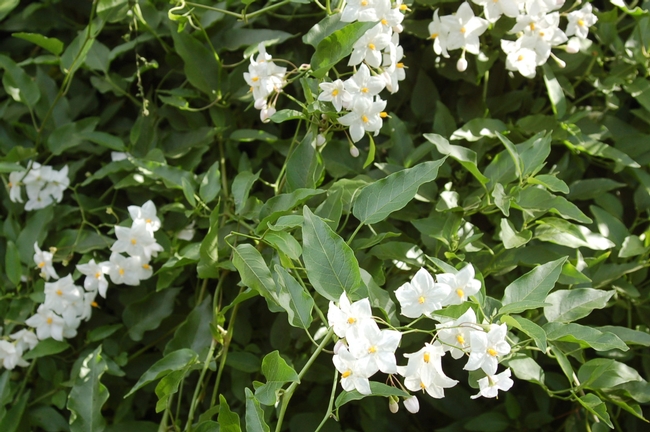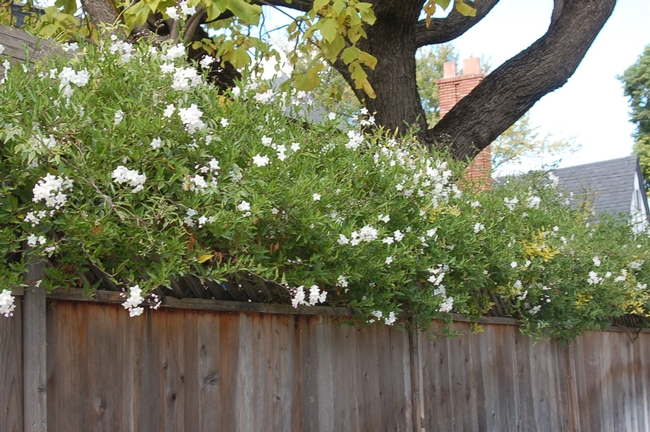Posts Tagged: vines
Rest Stop at the Arrol-Metz House
One of my favorite things in the garden is getting to watch the hummingbirds. I enjoy watching them travel from flower to flower, trying a little nectar here, and then a little nectar there. I love it when the sunlight reflects off their throat patch, giving it that ruby glow. I am impressed by their moxie. They don't seem afraid of creatures much larger than they are. I love their chirrupy call and the sound their wings make. I've been watching them for years, so I thought I'd seen pretty much everything ...
Until a few mornings ago, I went to my window and saw a hummingbird going from grape leaf to grape leaf. I was really puzzled as I knew there were not any flowers on the vine, and only two clusters of grapes on that vine. As I got closer I saw he was rubbing himself on the leaf, then ducking his head and throwing back his shoulders, all while his little wings were just whirring away. He did this on several leaves, before it finally dawned on me what was going on. The sprinklers had just finished running and the grape leaves were sheeted with water. The hummer was cleaning himself in the water on the leaves, and seemed to be having a grand time.
He also seems to think that the tomato cages have been put out for his convenience to perch on and rest in between checking out gladiola blossoms. Hey, I am always happy to be of service.
Adopted Vine in Lodi
Yes, this is my first adoption and it is a 'Zinfandel' vine on the property of Lucas Winery in Lodi. The vines in this California Certified Organic Farm, CCOF, are over 80 years old. A friend took me there to celebrate my birthday and I saw an opportunity to take part in the winery’s educational series. At the first event in March, we learned how to do spring pruning of the vine. Winemaker and owner, Heather Lucas demonstrated how to prune the spurs from the “arms” of the vine. The idea is to prune away any spurs, except one that is closest to the arm. Then on the remaining spur it is pruned down to two buds. This sounds easy, but there are agonizing decisions to make. Should the thicker spur remain even though it is further away on the arm? It is often just a judgment call, as we saw Heather and her husband, David, discuss their cuts. Well, we will see what happens at the next class in May, when we go back to remove weak shoots to help the vine produce the best quality wine.

Karen and her vine.

Heather Lucas pruning.
Potato, Potah-toe!
White potato vine, or Solanum jasminoides if you’re being formal, doesn’t look anything like a potato and grows up rather than underground. Its leaves are nearly always bright green and it produces white flowers even in the winter.
It disguises old fences nicely and can be trained to grow all over them. If you prefer it can be trimmed to add just a couple of feet of greenery to the top of a fence that’s not quite tall enough to hide your neighbor’s unkempt backyard.
The vine is soft and pliable and easy to cut which makes pruning a relatively simple job.
It can get bushy if not trimmed occasionally, and may try to get away from you, which could require a harder pruning. Afterward, agreeable as the White Potato Vine is, it will bounce right back to a more reasonable size and shape.
From the beginning white potato vine grows without much fuss. Weather doesn’t seem to affect it, most any soil is just fine, thank you, and it requires little water after the first year or two.
Its versatility, relatively low maintenance and nearly year-round green and white presence make White Potato Vine a great garden background.



